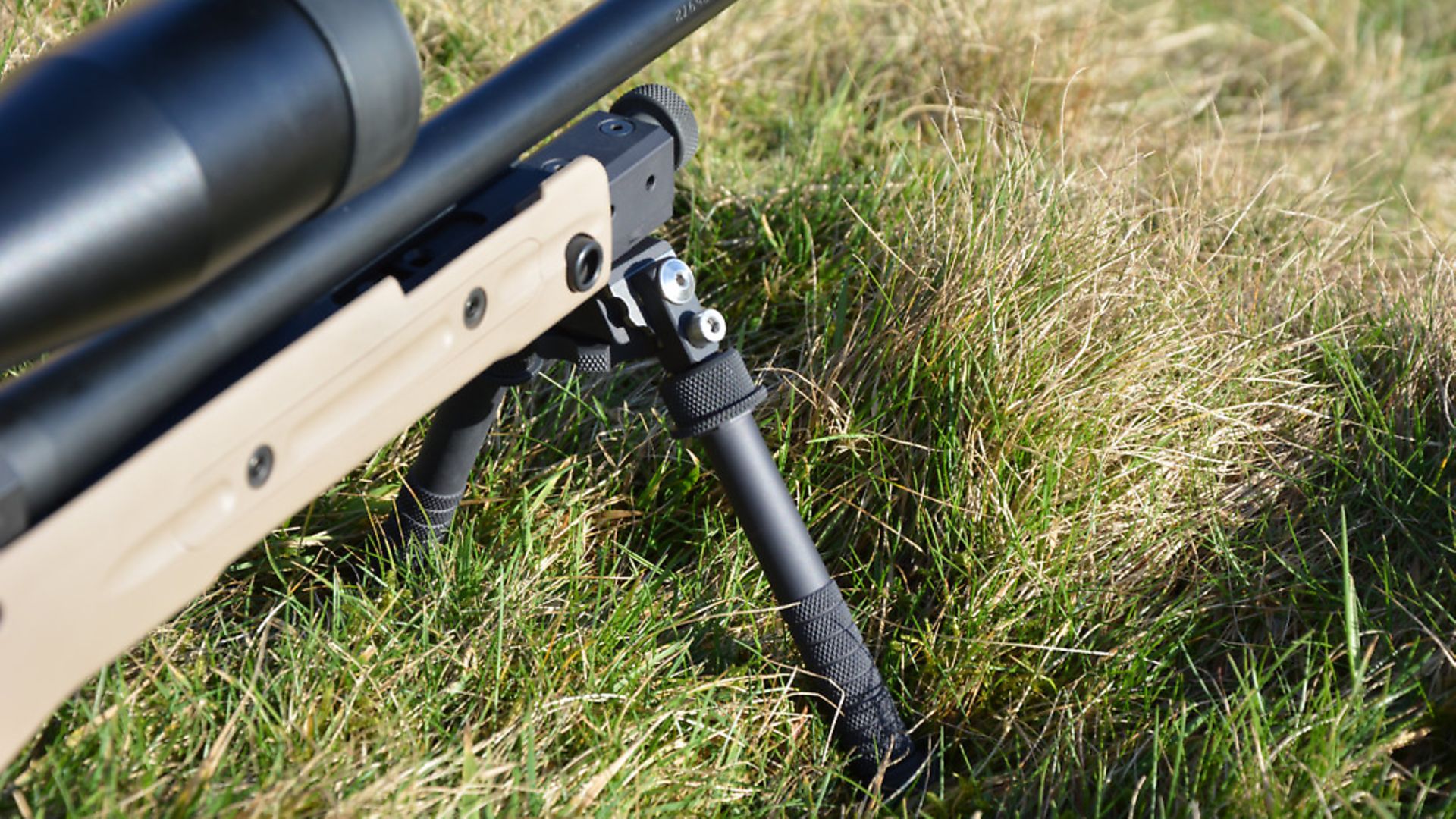The lightweight sturdy frame, ease of use and secure grip on this Atlas BT10 bipod went down well with Chris Parkin when he put it to the test
 credit: Archant
credit: Archant
Pros
* Lightweight but solid feel
* Ease of adjustment
* Pan as well as tilt
* Forward angled legs are more secure on grassy surfaces when loading the bipod
Cons
* Needs a Picatinny rail fitting but it is definitely worth the effort
Opinion
* Many have tried to imitate or improve upon the Harris bipod for its specific benefits and uses, but only the Atlas seems to have drawn me away… I will be buying one!
Atlas BT10 Bipod: £218 (lever fit from £288 BT10 LW17 unit)
Atlas BT15 Picatinny Rail: £22.00 (to fit to underside of rifle stock)
Contact: www.sportingservices.co.uk 01342 716427
IN DEPTH
The Atlas BT10 bipod is the base model of a range made available from Sporting Services that I first took to heart when using the Accuracy International AT rifle a few months ago. The solid but lightweight hard-anodised T6061 aluminium construction and innovative design features give new capabilities to a unit weighing just 300g. A lateral button at the pivot point of each leg allows one press to set the fore/aft leg angle for storage, transport or shooting. You can have the legs perpendicular to the rifle (straight down), or angled forwards to dig into the ground as you push into the gun to ‘load’ the bipod. All these crucial anchors are stainless steel for hardness and durability. An aluminium locking collar on each leg pulls down towards the foot to unlatch the telescopic tube controlling leg extension. After years of using Harris bipods this seemed awkward at first, but once you get used to it, it is far more accessible and intuitive to operate quickly, especially if reaching forwards from a stretched prone position.
As well as ‘cant’ you also have ‘pan’ on the Atlas, all controlled with +/-15 degree range of movement and tensioned with a knurled knob on the underside of the Picatinny base unit. Not all rifles have a Picatinny rail below the fore-end, but the latest breed of chassis rifles love to boast about who has the most. Short lengths of BT15 rail are available to mount to the underside of regularly stocked rifles, and to be honest give a far more secure anchor point to a bipod (which will be loaded from your shoulder pressure), than some of the weedy Heath Robinson devices I see, which also raise the pivot axis too far from floor and barrel. This is especially noticeable when torque from the spinning bullet passes down the barrel, causing the whole gun to flick slightly in the opposite direction each time it is fired. I found the Atlas far less susceptible to this without the need to severely tighten the pivot attachment – a specific characteristic I liked. A bipod with 6-9” long legs that is fastened to a sling stud without a ‘foot’ arrangement, to spread weight and minimise the leverage applied like the Harris, is destined to tear the stud out under pure tension, and I have done so on several occasions!
Internal springs and catches are stainless steel and the standards of manufacturing and finishing tolerances soon warrant the initially expensive price point. Firm rubberised feet minimise bounce from hard surfaces but are tough and don’t seem to degrade from rough handling on a rifle that gets bumped around. With the legs set to the shortest of their five positions, the rifle is only lifted 125mm from the floor, with up to 230mm at full extension. On a sporting rifle you can have a lever fit clamp, rather than the machine screw variant of the base model, allowing the bipod to be clipped on and off securely when not pocketed for storage. I intend to fit the BT15 rail to my MacMillan stocked .260 Precision rifle so I can use it with a BT10. I shoot very happily with a Harris, but cannot turn back from just how much more anchored the Atlas feels when loaded (with legs angled 45 degrees forwards) into the gravel or short-grass firing points of the ranges and moorland I shoot over.